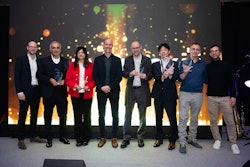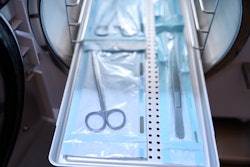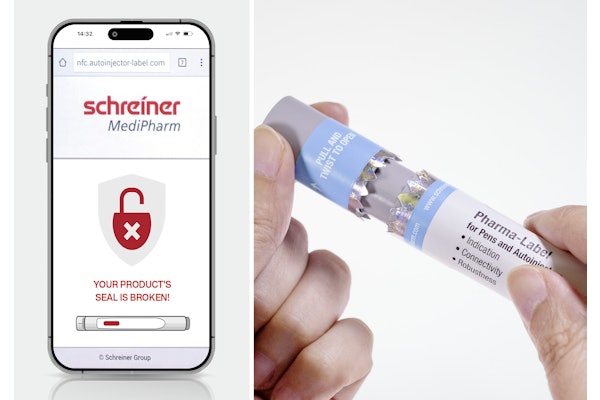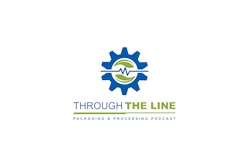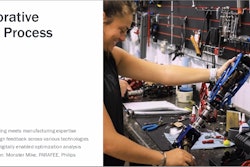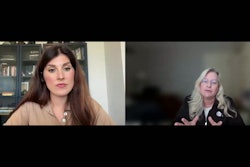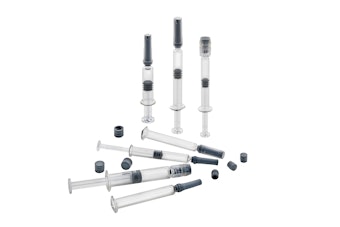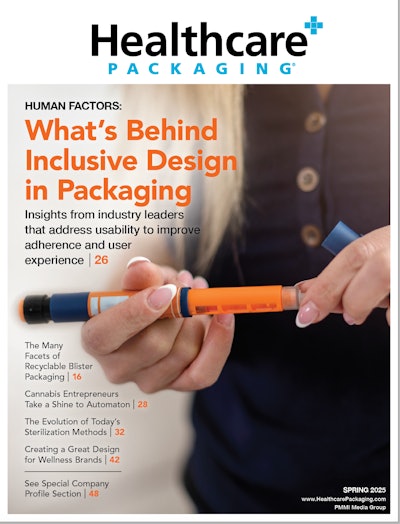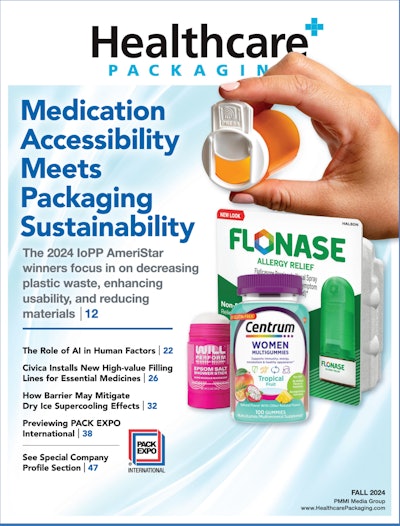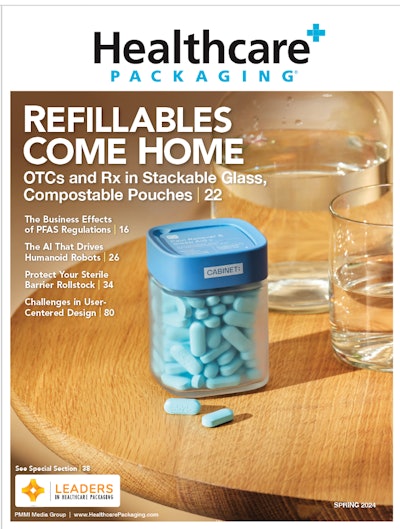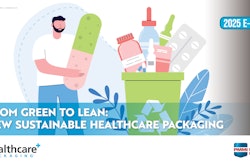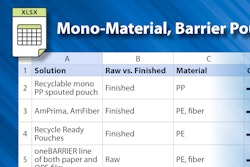Elisabeth Cuneo: Thanks for joining.
Jim Hamerslag: Hi, Liz.
Elisabeth Cuneo: Hello, so why don't you share your name and position and how long you have been in that role?
Jim Hamerslag: Okay. My name is James Hamerslag. My current title is Senior System Engineer for Siemens Healthineers. I've been in this organization for over, well, this is my 40th year. When I joined, it was DuPont, and then it was DuPont medical products, and then Dade International, Dade Bearing, Siemens healthcare, and now Siemens Healthineers.
So, same role doing the same kind of stuff. Product development, process development, manufacturing systems, just have a lot of different company name changes. I have a box full of business cards that go way back.
Elisabeth Cuneo: I'm sure. well, that's great. 40 years, that's quite an accomplishment. When we spoke a little bit prior to this call, you mentioned you have a history in microelectronics, which seems maybe a little bit unusual, but maybe not. Do you want to tell us how you started there and how you ended up in medical device?
Jim Hamerslag: So, coming out of grad school, I got a job with a company that makes wire bonding and dye bonding equipment for microelectronics. And so that was my exposure into that industry. From there, I went on to design and develop products for laser transmitters and receivers for fiberoptic undersea applications, further expanding my expertise in that field.
And then, in doing that work, I got expertise on thick film technology, and it's that technology, which I was able to use to go into medical products, because my first venture in medical products was the development of a medical device for measuring electrolytes - sodium, potassium, and chloride electrolytes - in human samples.
So that's kind of like my basis, and how I transitioned from microelectronics into medical devices. And I've been with medical devices since then, doing product development, process development and manufacturing systems implementation.
Elisabeth Cuneo: Interesting. Can you share, maybe in general, what kind of medical devices you now work with? You mentioned thick film to start, but I don't know if that's all.
Jim Hamerslag: Well, thick film is the technology that one of our sensors is based off of. But as a business, we're clinical chemistry in-vitro diagnostics. So outside-of-the-body testing. If you ever had your doctor say, “Oh, I want this lab work done,” and then you take the script and you go to like a Labcorp or Quest or something like that, and they draw your blood and then that gets shipped off to the lab.
Well, in the lab are our systems, our analyzers. And so really the result and product that we produce is information to doctors. And it's by way of these assays, you know, and we fall, we're FDA-regulated, but we're considered a medical device manufacturer.
I'm in reagent manufacturing. So, all our consumables that go into our analyzers, that's what we produce. So, it's the formulation of the reagents, it's the processing and packaging of those reagents. And that's where I get involved with product packaging for the medical device, which is our consumables.
Elisabeth Cuneo: Okay. So, you mentioned 40 years, and it may be hard to drill down maybe one thing, but what has changed the most in your career over the years, besides the company name in your business cards? And did anything surprise you?
Jim Hamerslag: Okay. So, what has changed over the years? I think, the improvements, in the engineering and manufacturing tools that, that I use primarily, like the personal computer. I remember when I started my professional life, there was the IBM PC, just came out. And you know its capacity or capabilities then, and that was cutting edge. And now, look what we have now, the workstations. I used to do things on mainframe computers, do analysis and that sort of thing, where I can just run that same kind of analysis on my laptop.
I mean, it's that change in technology which is, I look at it as just a tool that I use in the engineering work that I do. And the fact that this tool, the power is so incredibly, you know, they're so powerful. And if you look at their costs, and what they bring. I think the thing that's impacted my career the most is those engineering and manufacturing tools.
Elisabeth Cuneo: So, switching gears a little bit with medical device development, there's a lot of goals around that. So, there's pressures to be more sustainable with the materials used or, recycling or take-back programs. There's cost reduction, which is on everyone's mind. There's regulations. They're trying to create a user-friendly or a patient-centric device. So how do you balance all those things day-to-day?
Jim Hamerslag: Yeah. When we look at, when I think about the packaging of our medical devices, number one, you have, the product requirements, and you have regulatory requirements, but one of the things that's most important and people miss this, is the interaction with the customer. How is the customer going to work with this product? How does it fit in? Does it fit in well with their workflow? And our customers are primarily in the lab. You can have a high-quality product, but if you package it in a way that looks or is perceived to be low quality, that's a negative impact. So not only do you actually have to have a high-quality product, but you need to present it to the customer so that they then realize that it is a high-quality product.
We can have manufacturing defects that are that causes it not to meet the regulatory requirements. But then we can also have other defects like cosmetic defects, which the product is perfectly fine, it'll perform as expected. It's just that the customer, once again, going back to the customer’s perception, is that this is not a good product.
Elisabeth Cuneo: So, if that happens, are you now scrapping that product?
Jim Hamerslag: It depends upon the situation. Yeah, you know, sometimes if there's, let's say it's something where the customer calls up and they said, “Oh, I received this, but this doesn't look right.” Our approach is normally to just replace that product to the customer, get them the product that they're expecting. Don't put any resistance to do that.
So, this goes back to customer satisfaction. You want to make sure that your customer always feels like they're being taken care of, feels like they are your top priority, which they are.
Elisabeth Cuneo: Sure. Any pressures from the sustainability side?
Jim Hamerslag: There's always pressure, especially when, you know, our products are global. We sell across the globe. But in regions of Europe, in the EU, some of the countries are very, their regulations are a lot more stringent than what we have domestically. So, you always have to factor in the sustainability part of it. You want to drive to packaging where packaging can be recycled, or it's done with materials that have a minimal impact to the environment.
Elisabeth Cuneo: Okay, sure. So, when we initially spoke, you mentioned how you work with both the package material teams and automation teams, and the importance of being able to do that, and merging and bringing the two teams together. Can you elaborate a little bit on that?
Jim Hamerslag: Sure. So, at the beginning, when the product is in its initial phase of being developed and determined what is the thing that we're going to sell, it's important to engage the manufacturing team, the automation team with the people that are developing the packaging. Because you don't want them, you know, maybe they think they know how it would be done in manufacturing. Manufacturing folks are like, “Oh, no, this is the approach we need. This is the equipment that we have. And this is we need to produce this product on this equipment. So here are the requirements.”
So, you don't want to get down the path at the very end and realize that, “Oh, we can't make this in our manufacturing environment.” So that's why it's important to engage those teams early on.
Elisabeth Cuneo: And has that been your experience from the last 40 years, would you say doing working that way?
Jim Hamerslag: Yeah, we strive to do that. And that's why we have a lot of successes.
Elisabeth Cuneo: Okay. Yeah, that's great. Sometimes I've heard issues where it is sort of a silo like you had mentioned. You know, there's material people and then there's machinery people and, not often do they think the same way or maybe meet and talk about a project. But it sounds like maybe that's becoming a more customary approach to development.
Jim Hamerslag: I mean, one way to think about it is, we are all on the same team. We all work for the same company, so our goals, our objectives need to be aligned.
But a lot of times, the folks that are developing the product, they're being told by their management, “You’ve got to hurry up and develop the product.” But their vision doesn't go past the product development, as opposed to the manufacturing folks, who are going to say, “Okay, we got this product, we got to commercialize it, and sell it to the customer, because that's the only way we make money.”
I mean, everybody else except for operations is overhead. Operations is the only team that brings in revenue.
Elisabeth Cuneo: Okay, interesting. What do you see as the biggest challenge or biggest opportunity in the med device industry? Especially as it pertains to packaging. Maybe a big challenge is sustainability like we talked about, or maybe it's making sure your customers understand how to use the product or packaging correctly. So any kind of challenge or opportunity that you can think of within this space?
Jim Hamerslag: Yeah, as I alluded to, probably the two challenges or priorities in designing that are, number one: What are the product requirements? You got to make sure that your packaging addresses those needs, those requirements.
And then the requirements by the customer. For example, if it's a product that needs to be refrigerated, you need to make sure that the product works well. Is in a format that is compatible with the refrigerators that they use in the labs, for example?
So, they're the most, the top two things that are on my list. And then the third being regulatory. We're a regulated industry and we can't sell product without meeting the regulations, whether it's the FDA or whether it's different bodies in different countries that provide regulations that you have to meet.
Elisabeth Cuneo: Sure. So, switching gears to a little bit more personal, talking about you and your career. What do you think has been the most important skill you've developed as you've advanced your career?
Jim Hamerslag: Okay, there's a, there's a couple of them, I don't know if I can just say “the most important,” but a set of skills that I use that I think are extremely valuable to me.
One is the statistical analysis of data, primarily manufacturing data is what I deal with every day, because you're always striving to make improvements. We value what's coming out of the information that's coming out that's characterizing the process and then you need to be able to analyze that information to figure out what you do to make that next improvement step. And there's, there's always that drive to improve, improve, improve. So, the statistical analysis tools have been extremely beneficial for me.
Design of experiment skills. So, a systematic way to evaluate different situations. And in that way, by applying good design of experiment practices, you can get to the result, the information that you want in the most efficient way.
Data is so important in what I do, so, implementing systems to automatically collect data. You know, the technologies are there. A lot of people still manually collect data, but you then introduce the human factor. As humans do things repetitively, you can probably assume you're going to hit it 80% of the time and the other 20%, you know, the data is questionable. So, having automated tools to collect the information you need to make decisions on how your process is running and how you make improvements, I think is very important.
And then for me, the other skill is really, I'm not a software engineer, but I do a lot of process control software, and that's another tool that I use in the engineering work that I do. You asked for one. I gave you four.
Elisabeth Cuneo: No, that's great. I mean, the, you know, the digital transformation of these companies is definitely top of mind and especially collecting data, like you said, to improve production and reduce downtime. These are the trends within machinery that we hear about.
So that's great. What about any parting wisdom for, you know, think of someone young, starting in their career in med device development. Do you have any wisdom that you can share with them?
Jim Hamerslag: Sure. And it's not just for medical device. I would say if you're. You know, you know, coming out of college and entering the workforce, being a young professional, find a mentor. Find a mentor that is energized at coaching, teaching and guiding you. And that, especially early on in your career, develop that relationship, and it's going to give you returns, orders of magnitude greater than what you put into it.
If I look at young engineers that are most successful, they're the ones that have a strong mentor.
And it comes down to, you know, build off of people's success and failures. Don't try to reinvent the wheel. I mean, if you look at how technology has advanced over the last, you know, 50 years, every new individual into a field doesn't start from ground zero. They work from what people before them have done. And I see a lot of young engineers, they're not willing to spend the time to figure out what other people have done. They feel like - and this is good because they have the right attitude of, “Yeah, I can solve that problem.” Maybe you're not the first person to have this problem, so leverage off of what somebody else did. Whether they were successful or not, learn from that, and that allows you to focus on new problems that nobody else has worked on.
And then the last thing it goes towards being a young engineer. Always have stretch goals. Try to push yourself further and don't worry about failures. There's nothing wrong with trying something and failing. People think that's the worst possible thing, but it's not. That's how like, “Okay, here's the failure. We know we can't do it that way or do that.” That just helps us get in the direction of what the right solution is.
Elisabeth Cuneo: Yeah, of course. Well, then I have to ask; Did you have a mentor when you were just starting out? Or are you a mentor now?
Jim Hamerslag: I do mentor. Yes. when I started out, in DuPont Engineering, it was in a transition phase where they started getting away from that, but I did have a senior engineer who I was able to interact with, and he definitely helped me out.
Elisabeth Cuneo: That's great. That's awesome. Well, thank you, Jim, for your time today. It's been great catching up and hearing about your career and your work.
Jim Hamerslag: Very good. Enjoyed talking with you.
Elisabeth Cuneo: Thank you.




